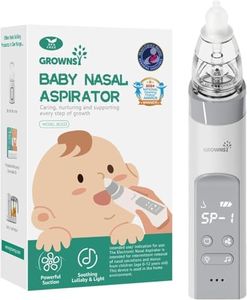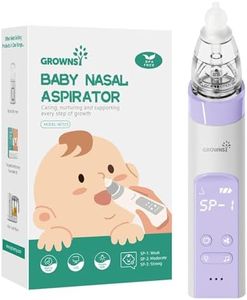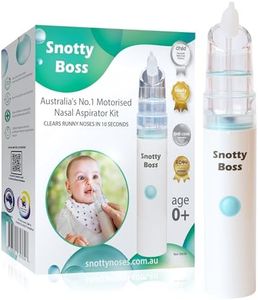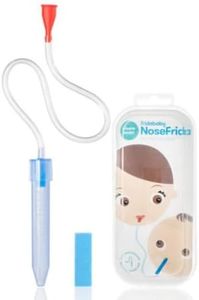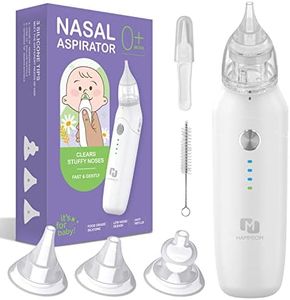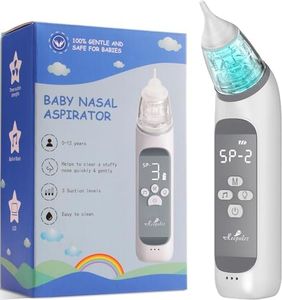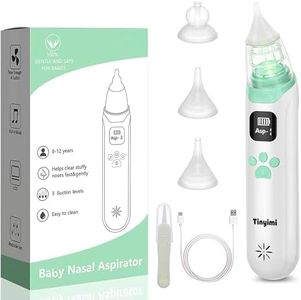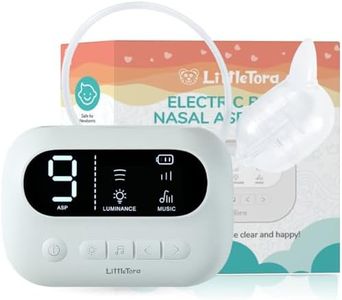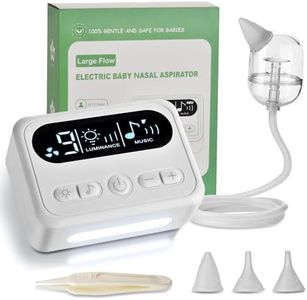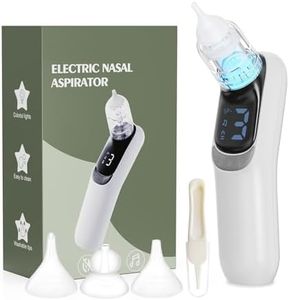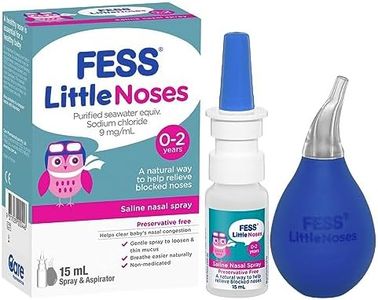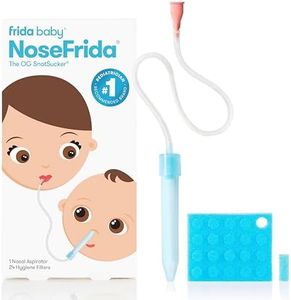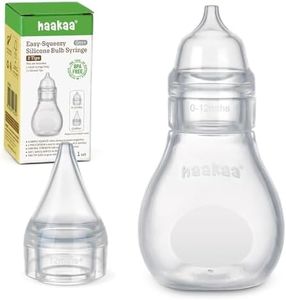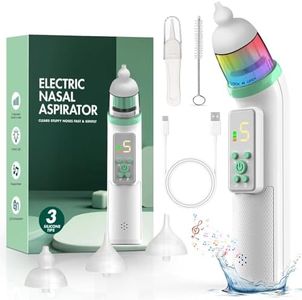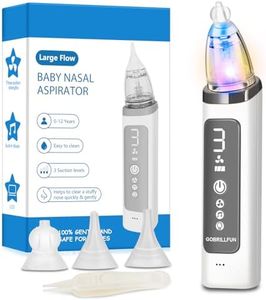We Use CookiesWe use cookies to enhance the security, performance,
functionality and for analytical and promotional activities. By continuing to browse this site you
are agreeing to our privacy policy
10 Best Nasal Aspirators
From leading brands and best sellers available on the web.By clicking on a link to a third party's website, log data is shared with that third party.
Buying Guide for the Best Nasal Aspirators
Choosing a nasal aspirator is an important step for helping babies or young children breathe more easily when they are congested. These devices gently remove mucus from the nasal passages, making breathing, feeding, and sleeping more comfortable. To find the best model for your needs, it's important to consider a few key features so you can get a product that is safe, comfortable, and easy to use for both you and your child.Type (Bulb, Manual Suction, Electric)Nasal aspirators generally come in three types: bulb, manual suction, and electric. The bulb type is squeezed and then releases to create suction, manual suction uses your mouth's power (with hygiene filters), and electric uses battery-operated mechanisms. Bulb aspirators are simple and easy to use, making them good for quick cleans but they may not be as powerful or easy to clean. Manual suction gives you more control over the suction strength and is usually easy to clean. Electric aspirators make the process simple with one-hand operation and adjustable suction but may be noisier and need batteries or charging. To pick the right one, think about how frequently you’ll use it, your comfort with operating the device, and your priorities (like speed, hands-free operation, or cleanliness).
Suction Power and AdjustabilitySuction power is how forcefully the applicator can remove mucus from the nose. Some aspirators offer adjustable suction so you can select a gentle pull for sensitive infants or a stronger one for stubborn congestion. Mild suction is typically fine for regular use and very young babies, while higher settings can be more efficient for older infants or thicker mucus. If you prefer to start gentle and adjust as needed, look for an aspirator with multiple levels of control.
Tip Design and MaterialThe tip is the part that goes into the baby's nostril. Soft, flexible silicone tips are considered safest and most comfortable for delicate baby skin. Some tips are shaped differently (wider, tapered, etc.) to suit various nose shapes and ages. Firmer plastic tips can be less comfortable. Select a tip size and material that matches your child's age, ensuring it’s both safe and gentle to prevent irritation or injury.
Ease of CleaningProper cleaning is crucial to keep the aspirator hygienic, since it comes into contact with mucus. Some models can be fully disassembled and washed, while others may have parts that are difficult to reach. Some even offer dishwasher-safe components. If you want less hassle, select a design that is simple to take apart and clean thoroughly after each use, especially if you’ll use it often.
Noise LevelWhile bulb and manual aspirators are nearly silent, electric models may emit a humming or buzzing noise. Sensitive babies can be startled or upset by noisy motors, so a quiet device might make aspirating easier and less stressful for both of you. Think about your child’s temperament and when you'll need to use the aspirator to determine if noise is a significant factor for your family.
PortabilityIf you travel or move around often, you might want an aspirator that is lightweight, compact, and easy to pack. Bulb and manual models generally fit this need better, while some electric units may be bulkier or require charging. Consider your lifestyle and whether you need to use the aspirator outside of the home when making your choice.
